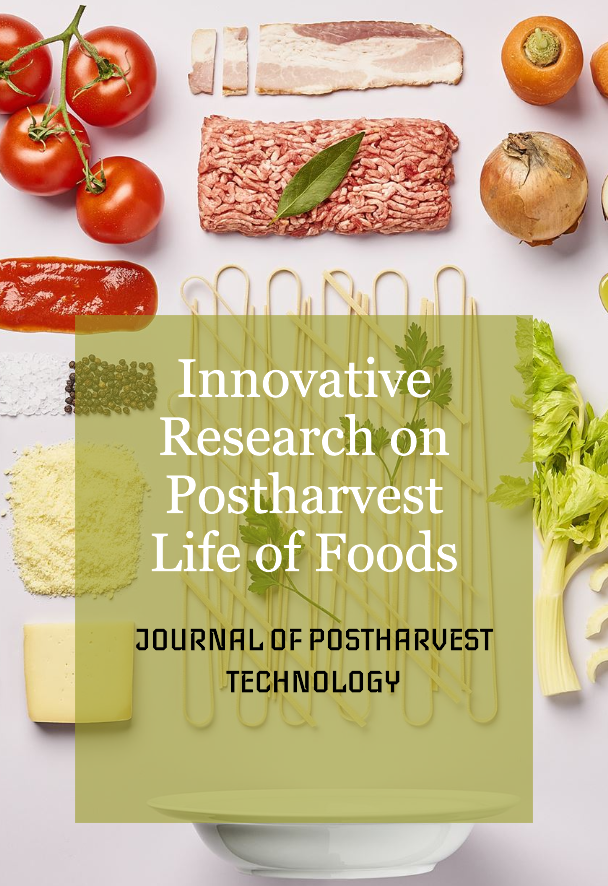Determinants of postharvest losses among high moisture content vegetables traders in Kenya
Keywords:
Vegetables, traders,, postharvest losses,, factors,, quality.Abstract
Food losses occur in the agricultural value chain due to internal and external factors. The study sought to identify the effects of some of these factors in contributing to postharvest losses of vegetables in the traders component of the value chain. Both primary and secondary data were utilized; the former was collected from retail and wholesale traders in 14 markets in four counties of Kenya. The selected counties were: Kakamega and Kisii for indigenous vegetables, Kirinyaga for tomato and Kiambu for cabbages and kales. Age, urbanization, population, female gender, use of appropriate infrastructure, value adding to produce through grading and sorting, access and use of market information, had a negative relationship to losses. Losses were highest with cabbage, followed by tomatoes, Kales and lastly indigenous vegetables. Vegetable sourced from the market had highest losses, followed by that from farmers groups, middlemen and the least being for that sourced at farmgate. Large batches, and longer times to sell and transport the produce led to high losses. Highest losses during transportation occurred with the use of vehicles, followed by cycling, manual, draught and least with motocycle. The study recommends detailed study of the effect of individual factors and their interrelation in contributing to food losses.
References
Ancos, C. M., Lobo, G., and Monreal, M. 1996. Effects of freezing and canning of papaya slices on their carotenoid composition. Zeitschrift für Lebensmittel-Untersuchung und Forschung, 202(4), 279 - 284.
Aidoo, R., Danfoku R. A., and Mensah, J.A. 2014. Determinants of Post Harvest Losses in Tomato Production in the Onffinso North District of Ghana. Journal of Development and Agricultural Economics. Vol 6(8), pp 338-344. No 52E516546187, ISSN2006-9774
Chun-Ta, W. 2010. An Overview of Postharvest Biology and Technology of Fruits and Vegetables. Paper Presented in Workshop on Technology and Reducing Postharvest Losses and Maintaining Quality of Fruits and Vegetables
Folayan, J. A. 2013. Determinants of Post Harvest Losses of Maize in Akure North Local Government Area of Ondo State, Nigeria. Journal of Sustainable Society, Vol. 2, No. 1, 12-19
HCDA, 2013. Role Of Horticultural Crops Development Authority and Horticulture Sector Performance Report.
Gustavsson, J., Cederberg C., Sonesson U., and Emanuelsson A. 2013. The methodology of the FAO study:“Global Food Losses and Food Waste -extent, causes and prevention”. Technical Report Swedish Institute for Food and Biotechnology.
Kiome,R., Lusaka K. M., Micheni J. N.,. Stower D. N, Nyakenyanya S., Orege C., Angote D. N., Wa-Mwachai M. A. M., Ngari M. and Lenayapa L. 2010. Agricultural Sector Development Strategy 2010–2020. Government of Kenya
Kader, A. A. 2000. Postharvest biology and technology: an overview. In Kader AA (Ed). Postharvest Technology of
horticultural Crops., University of California, Davis, DISION agrc. Nat. Res. Pub., 3311: 15-20
Kader, A. A. 2006. The Return on Investment in Postharvest Technology for Assuring Quality and Safety of Horticultural Crops. Paper Department of Plant Sciences, University of California
Kiaya V. 2014. Postharvest losses and strategies to reduce them. Technical paper on postharvest losses. ACF International. National Economic and Social Survey. 2013. Kenya National Bureau of Statisitsic
Voices Newsletter. 2006. Increasing post-hravest success for small holder farmers No. 79. http:/www.farmradio.org/english/partners/voices/Voices_79.pdf




